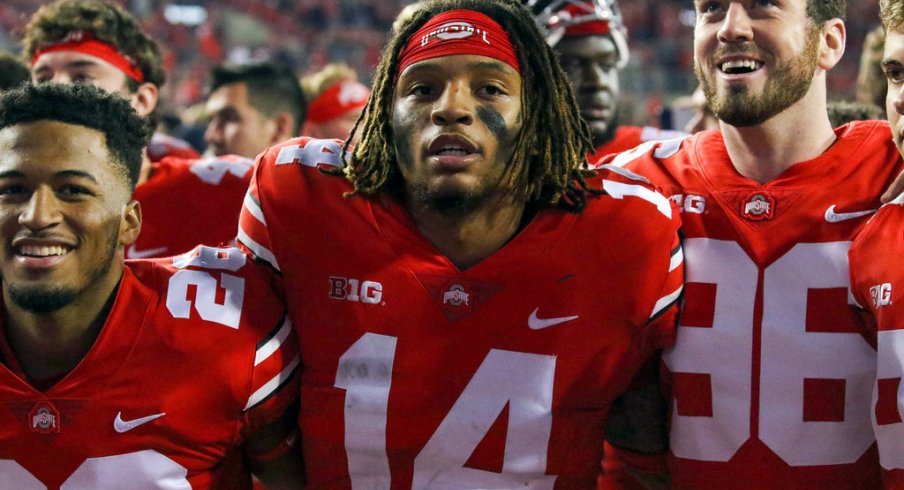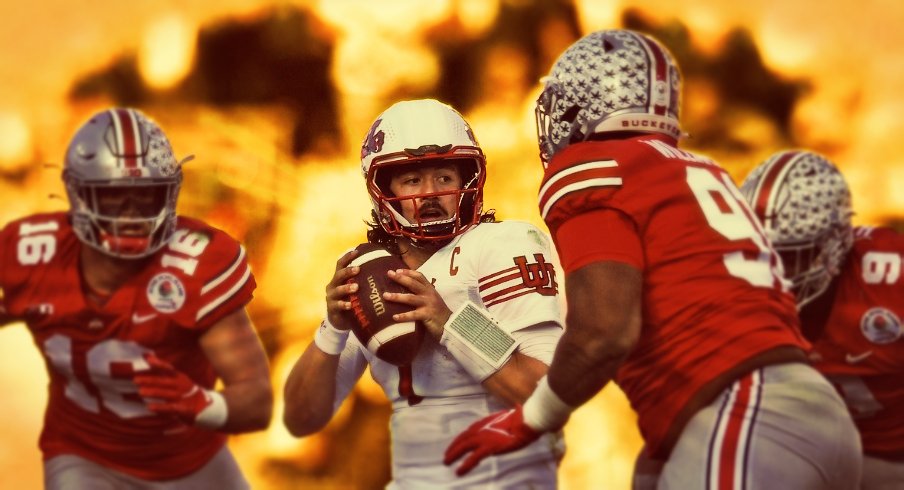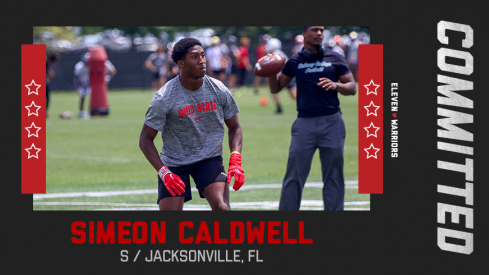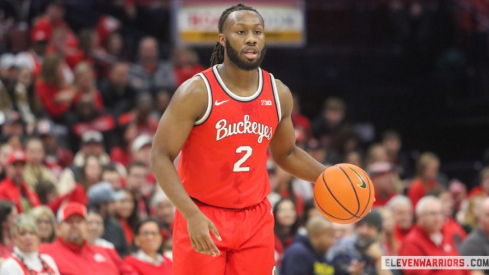Ohio State adds another top-100 safety as Simeon Caldwell commits to the Buckeyes.
The Ohio State defense got Jim Tresseled throughout 2021.
It’s a cruel, explicit and effective strategy - Tressel used to do everything but email the Buckeyes’ game script to his opponent each Saturday. He would run the same plays, repeatedly.
It was telegraphed right down to the choreography and snap count. The outcome sometimes took a few dry runs to crystallize, but Tressel was simply building sustainability for four quarters. Individual drives were merely pieces of that puzzle. Only the scoreboard mattered.
Which was why studying Tresselball too narrowly clouded the bigger picture. Here are five identical off-tackle handoffs which all took place inside of a single quarter of one game:
| ATTEMPT | RESULT |
|---|---|
| 1st | 0 yards |
| 2nd | -1 yards |
| 3rd | 1 yard |
| 4th | 4 yards |
| 5th | 59 yards, TD |
Why do we keep running tha— oh.
Fans were annoyed the fourth time Beanie ran smack into Michigan defenders waiting for him at the precise gap they knew he run into. But after the fifth one we were too busy celebrating to be bothered by it.
Those were all Dave plays (IYKYK) and this sequence from the 2008 Michigan game is my favorite Tresselball sampling outside of Tempe. It would be the second time in a four-year rivalry stretch where Tress buttoned it up from kickoff all the way to handshake - because he knew his defense wouldn't allow the Buckeyes to lose.
Defense wouldn’t allow the Buckeyes to lose is an erotic phrase in 2022. If you have the stomach to rewatch the defense in the Oregon game (or the Purdue game, or the Michigan game, or the 1st half of the Rose Bowl) you can relive what it was like to be on the receiving end of Tresselball variants.
You’ll observe dozens of instances of opponents running the same play, again and again. They did their homework and were disciplined enough to stick with it. Two of them were talented enough to win the long game and survive the Ohio State offense.
Everything was telegraphed last season. It was the offense which wouldn’t allow the Buckeyes to lose most of the time, while its defense allowed 87 points over the final two games alone. Oregon demystified the unit in September, and Michigan stayed patient enough to follow its own version of that blueprint.
Ronnie Hickman is at B1G Media Days this week answering two dozen different Phrasings of the same question about his unit’s performance last season.
Compare the Wolverines’ 42 points last November with their outputs from 2007 to 2010. Ohio State allowed Michigan just 27 total points over that span, less than one touchdown per afternoon for four years. The futility not only switched sides, it switched units.
All of those Daves from the century’s first decade collectively accomplished what Tressel had intended: Protect the ball. Move the chains. Run the clock. And score the points, or at least enough of them - even if Michigan always knew what was coming. And on the OSU side, the defense applied Tresselball principles to improve its own execution on familiar plays.
An underrated aspect to stale play-calling is it demystifies the defense. Tressel’s offensive players complied assignment data with every snap, solving how to individually elevate their own execution against what they were seeing each time.
That was Tresselball’s tepid charm - ossified play-calling buoying performance as the game progressed. The fifth time Terrelle Pryor received a snap and tucked a handoff into the tailback’s chest in that 2008 Michigan game, it was more fluid than the second time.
The fifth time Jim Cordle pulled from his guard position and ran right, he found a Wolverine to erase more quickly and aggressively than he had on an earlier drive. And the fifth time Beanie got his feet settled beneath him at possession, he chose the path less-traveled and dusted everyone in yellow pants.
Over the course of those games, ossified play-calling would benefit the offense. It fed rhythm for the first two seconds and encouraged improvisation and individual adjustments over the ones that followed. Not only did Ohio State's opponents know what Tressel was going to do, Tressel's pre-Ohio State opponents knew what Tressel was going to do:
"Jimmy runs a sprint draw nine times to get into the end zone," (former Syracuse head coach Dick MacPherson said). The next series, he starts with a sprint draw. I get on the phone, and excuse my language, I said, 'Jesus Christ, Jimmy, don't we have another damn play?'
"He said, 'Yes we do, Coach. As soon as they stop this one, I'll call it.'
Fast-forward to the 2021 season and for the first time in ages, it was the Ohio State defense being victimized weekly by an ossified play-calling strategy. They were the ones being studied and solved by repetition, most conspicuously by the Ducks, Wolverines and Utes. They mastered the Buckeyes’ tendencies and exploited them.
Strategically, Ohio State was put in position to lose. Tactically, the players did little to improve it.

Ronnie Hickman is at B1G Media Days this week answering two dozen different phrasings of the same question about his unit’s performance last season. And while there are many areas of improvement, the big picture objective is for the Silver Bullets to deploy both strategic and tactical adjustments to offensive strategies that never materialized in 2021 - or 2020, if we want to be honest about the unit since Jeff Hafley’s departure.
Hickman’s gaudy statistics last season from the boundary were a symptom of the demystified unit he will be trusted to help transform into something better resembling the Ohio State defense of, well, just about every decade ever except the current one.
Last season the defense got its ass kicked by repetition, on multiple Saturdays, on the most important Saturday - and on New Year’s Day, at least until the sun went down. The Ohio State Buckeyes got Jim Tresseled with alarming regularity. You’re thinking hey that should be illegal and I’m not a lawyer but you’re not wrong.
And yet, seven years after Zeke Elliott ran the same counter play against Oregon in Arlington en route to 246 rushing yards with the Ducks helpless to stop it, the Buckeyes found themselves on the receiving end of Oregon running their own version of same-play syndication with hauntingly similar and appalling efficacy.
Tom Herman kept smashing the counter button that night until his thumb cramped up and the whole team got rings. He did that because he could, similar to young Tressel running sprint-draw ad infinitum or older Tressel running Dave.
This is possible when a defense is unprepared to evolve. Oregon figured that out in the Horseshoe.
The 2nd half of the Rose Bowl was a brighter glimmer of hope for that unit than any of us realized at the time - the defense not only needed that performance, the game would have been lost without it. But if Ohio State is going to avoid consolation prizes and return to the CFP, it cannot be solved so easily for a third-straight season.
It will have to squeeze offenses on their bread-and-butter plays and then leave the big plays to chance and individual skill. It cannot be lulled into stagnation again. And if it’s successful, this decade of OSU defenses will belatedly join all the ones that preceded it.



